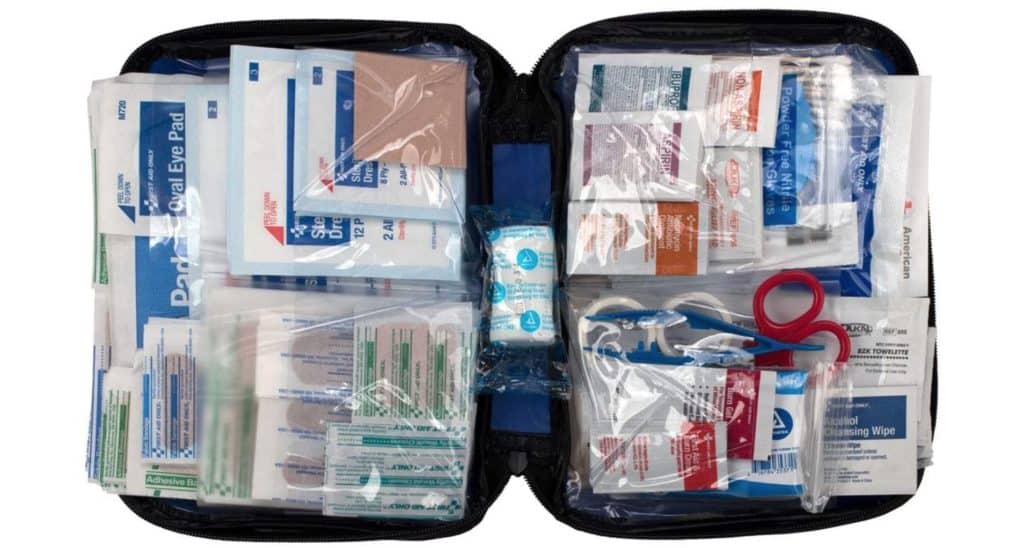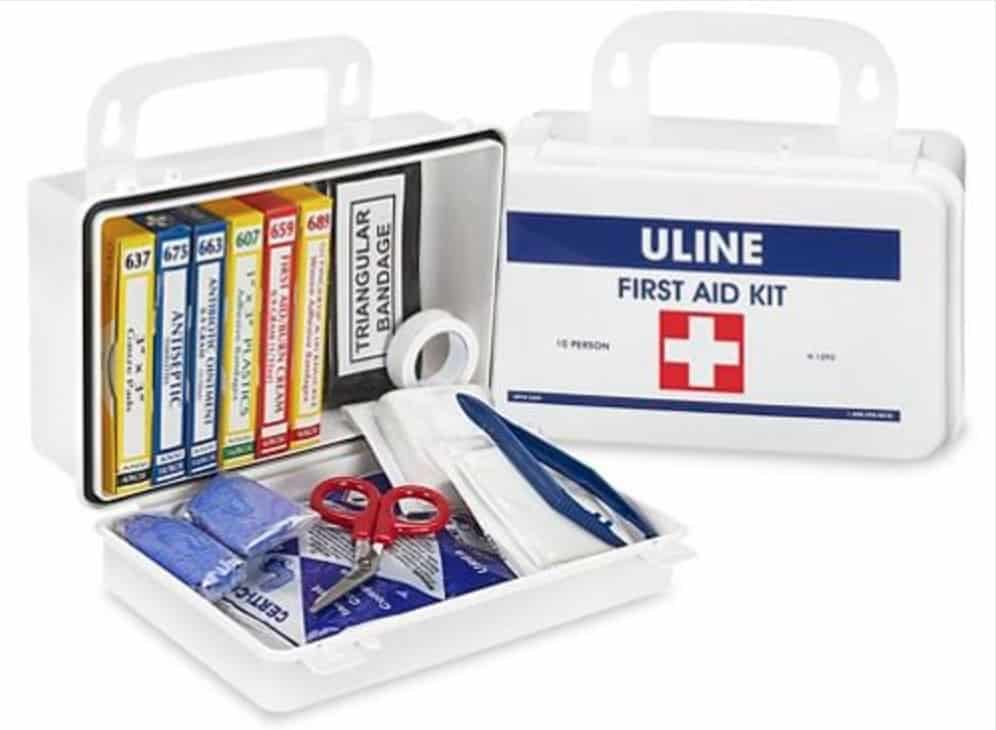Every home and apartment should have certain necessities. Sure, we might focus on coffee makers and high chairs, but first aid kids are even more important. There are so many to choose from and they all seem the same, but what’s the right choice for your home?
What Should Be In A Home First Aid Kit?
These are the necessary items for any first aid kit, regardless how small, lightweight, or basic it should be…
- Adhesive Tape
- Bandages (band-aids) in a range of sizes
- Gauze Pads
- Non-adhering Pads
- Scissors
- Would Cleaning Solution (many types are available)
- Hand Sanitizer
- Antibiotic Ointment
- Alcohol Wipes
Other things you’ll want to see, but are must-haves for home:
- Cold Packs
- Cotton Tip Applicators
- Splinter Remover
- Burn Gel
- Iodine Swaps
- Sterile Gloves
Which One Is Right For Me?
Choosing one of the many available kits can be a real challenge, but try to figure out the right ones based on the price, items, context, and size that fits your needs. Price and items should be clear at this point, but remember size is a factor as well. Some kits will be sold for small groups (say 4 people) while others will be the kit you’d want at an office of 75 people.
You should also look for some sort of compliance labels. Signs of quality for a general home first aid kit will be ANSI and OSHA compliance. These agencies certified the specifications for items like these kits in order to ensure they are properly outfitted to keep people both prepared and safe. Look for language like “OSHA and ANSI Z308.1-2009 Compliant.”

First Aid Kit vs. Trauma Bag
A first aid kit will, generally speaking, range from a set of simple bandages and treatments for common cuts, scrapes, and burns to much more extensive treatment. Simple kits for the home (and car) will usually be limited to mostly bandages.
A trauma is more akin to something that a first responder would be expected to show up with. It will include potentially life-saving items that you might not even know how to use without training. These items might include:
- Blood Pressure Cuff
- Emergency Blanket
- Small flashlight
- Tourniquet
- Eye Pad
- Finger, Knuckle, (etc.) Specific Bandages
- C-Collar
- Berman Airway Kit
- CPR mask
- Finger Splints
Here is are examples of trauma bags that will work for homes but, typically, aren’t the right purchase. One is about $80 and the other is over $200. Note the bright colors, large size, and focus on portability.

First Aid Kits For Home
Here are some top options for first aid kits in 2020.
M2 Basics 300-Piece
One of the most popular options sold online is the M2 Basics kit. It sells for a very reasonable price (about $30) and includes lots of basics and all the necessities. There is some filler in order to get to 300 pieces, but that’s OK since it doesn’t seem to inflate the price.
Some of the highlights include 6 styles of adhesive bandages, an abdominal trauma kit, eye pads, sponges, medical tape, a cold compress, cleaning towelettes, tweezers, and wooden splints. Filler is going to be something like tongue depressors, which there isn’t really a clear need for at home.
The kit is in a soft case, but home and office kits are normally better suited to hard plastic cases so they can be mounted in a convenient place or put on a shelf.
It’s worth noting that M2 Basics also sells a 350-piece first aid kit that, for an extra $5 or so, adds more pieces of bandages and tape (etc.) plus puts everything in a nice hard case.
Johnson & Johnson All-Purpose First Aid Kit
The most recent first aid kit I’ve purchases is the 140-piece Johnson & Johnson All-Purpose. It’s a portable kit in a hard case that is quite affordable (under $15) and includes items from brands that I know and trust, like Band-Aid, Neosporin, and Tylenol.
The 140-piece kit will be a great addition to a car or home, and includes antibiotic cream, gloves, a cold pack, acetaminophen, gauze, lots of bandages, and more. It is lacking some of the most extensive items that would be used for serious injuries.
I like this kit because it features products that I would buy on their own, so it’s something I can actually use without it being an emergency. The downside, is that if something were to go really wrong it’s lacking — it’s really for day-to-day mishaps.

Uline First Aid Kit
Uline is a name that I know and trust so their first aid kits are a great pick for me. They are professionally handled, straightforward, and found in thousand of businesses around the country.
Uline’s kits aren’t as easy to find online, but they can be bought direct or in person if you look out for them.
A good pick for the home is the Uline H-1292, a 10-person kit. The kit is so popular and so standard that is has a NSN (national stock number) so any government agency can stock them. That NSN is 6545-00-656-1093.
What’s Missing From These Kits?
No kit will have everything, but as a parent and person who has seen their share of accidents I do see a few things missing from these.
First I’d make sure to have children’s Tylenol handy. While we try to avoid any over-the-counter medicine, this is useful in all sort of scenarios. Next is Benadryl. Again, we rarely avoid it, but an unexpected allergic reaction is both seriously concerning and not that rare in the scheme of things. More serious kits have a nasopharyngeal airway kit for breathing issue, but once you are getting into trauma items like this, you will find the simple OSHA-approved kits missing many things.
FAQs
Is a hiking or outdoor emergency kit good for homes?
Hiking first aid kits are better than nothing but aren’t ideal for home use. This is the case because they focus on lightweight so you might not have the range of items you would in a home- or office-focused kit. This focus on weight can mean light-duty components or lack of heavier, but important items. Also a hiking/outdoor kit will be designed with the understanding that immediate help is not available, so you might have something like QuikClot, which is expensive and not typical necessary if you are close to medical support.
What is an IFAK? Is it a first aid kit?
An IFAK is an “Individual First Aid Kit” that is usually designed with serious trauma and major wounds in mind. These are tactical kits usually used with military personnel as opposed to being designed for home, car, or camping use. Expect to see items like QuikClot, not commonly found in basic first aid kits.
Do first aid kits needs to be replaced over time?
Yes. First aid kits do need to be replaced over time. Most quality kits will feature a “Made On” date as well as an expiration date on them. The recommendation will vary buy brand, with some (like Uline) giving a one-year expiration on their products while others giving a longer timeline for acceptable usage.

